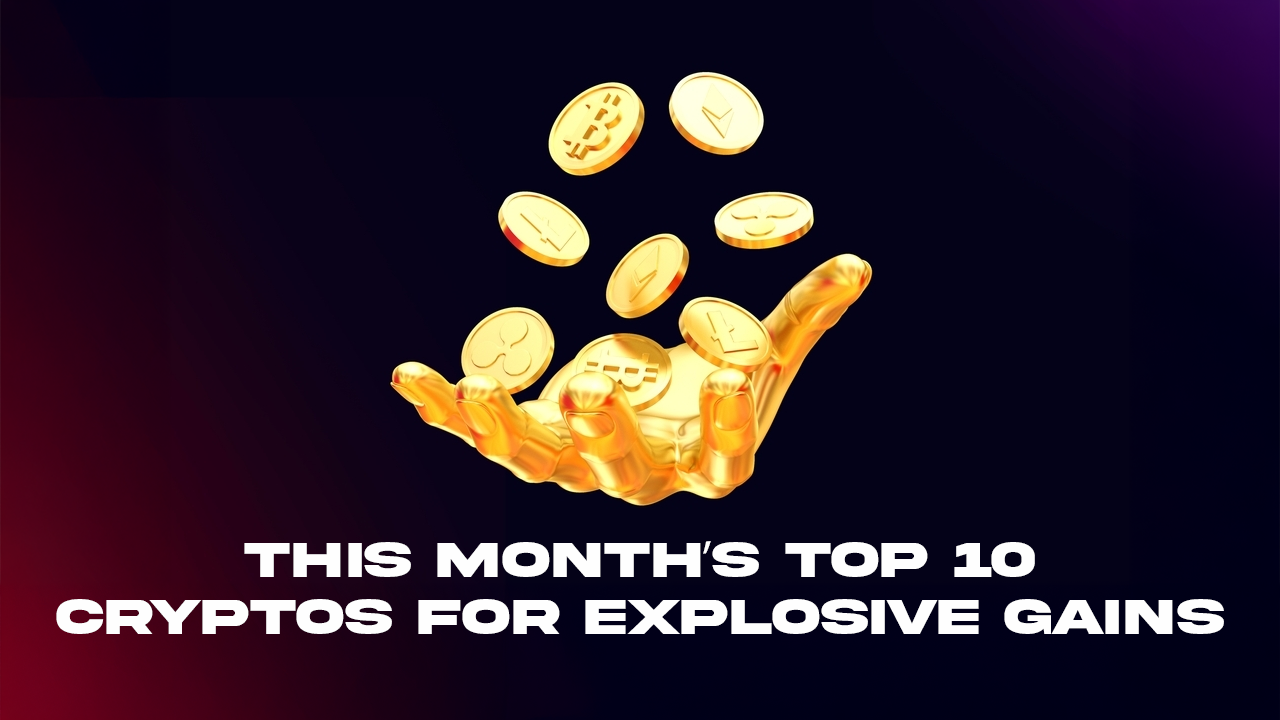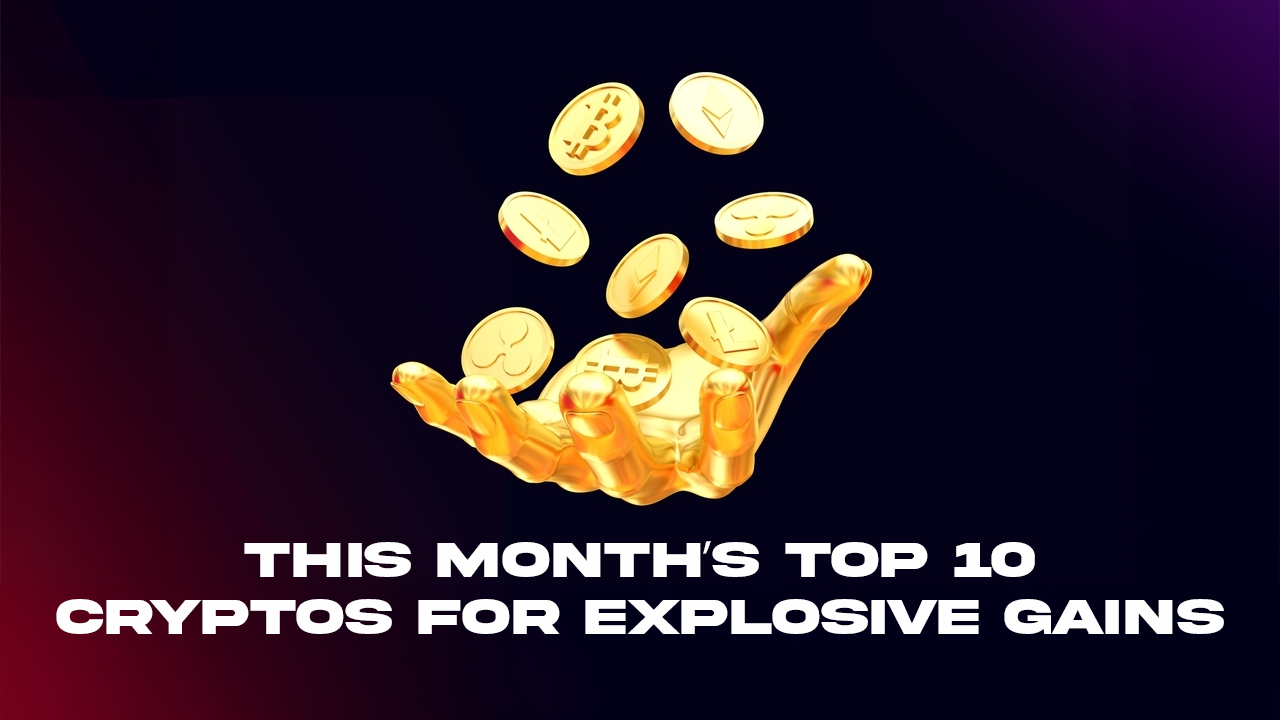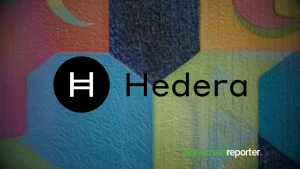Cryptocurrency continues to dominate financial headlines, with investors, developers, and enthusiasts eagerly keeping an eye on the latest market trends. As we step into 2025, the landscape is filled with new opportunities, many of which lie in the low-cap cryptos. These coins are often overlooked, yet they can offer significant upside potential due to their relatively small market capitalization, making them ripe for growth. Among the most exciting players in this space is Qubetics ($TICS), a project currently disrupting the industry by addressing the limitations faced by its predecessors. With its innovative approach, particularly through its QubeQode IDE, Qubetics is positioning itself as a key player in the low-cap sector, with promises of sky-high ROI once its mainnet is launched.

For those looking to invest in promising yet undervalued assets, this list of Top 10 Low Cap Cryptos brings together both familiar names and rising stars. We’ll dive into the latest developments surrounding each coin and analyze why they hold potential for investors looking for the next big breakout. But first, let’s take a closer look at Qubetics—a project that’s set to shake up the crypto world.
1. Qubetics ($TICS)
Qubetics is one of the most anticipated projects in the blockchain space, and for good reason. With its presale in the 22nd stage and already more than $12.9 million raised from over 20,000 holders, $TICS has made a strong impression. The project aims to address significant challenges in blockchain development that many other projects have struggled with, particularly scalability, user-friendliness, and high transaction costs.

The key differentiator for Qubetics is its QubeQode IDE, a tool designed to simplify the development of decentralized applications (dApps). For individuals, professionals, and businesses in North America, QubeQode offers a user-friendly interface to build complex applications without needing to dive deep into complicated coding. Imagine a small business wanting to integrate blockchain technology for secure transactions—QubeQode simplifies the process, making it as easy as using a regular coding platform but with enhanced blockchain capabilities.
As the presale progresses, $TICS is priced at $0.0807 per token. This price is expected to rise significantly once the presale ends, with analysts predicting $TICS could soar to $1, offering a 1,138% ROI, or even $5, which would represent a staggering 6,093% ROI. With such strong growth potential, Qubetics stands out in a crowded market.
Qubetics: Solving the Problems Others Couldn’t
Qubetics has identified major pain points that have hindered the scalability and adoption of blockchain technology—particularly in North America, where businesses need efficient, low-cost solutions. The QubeQode IDE eliminates many of these barriers, offering seamless integration of blockchain technology into businesses’ existing workflows. Take the example of a professional developer who wants to create a new dApp for tracking supply chain logistics. Instead of grappling with multiple complex tools and APIs, QubeQode allows them to streamline the process with its unified platform.
Another significant advantage of Qubetics is its tokenomics, designed with sustainability in mind. Token burns are built into the system to reduce circulating supply, increasing scarcity and value over time. This mechanism, along with regular updates from the team, ensures that $TICS holders benefit from an appreciating asset, making it a compelling choice for investors looking for long-term gains.
Why Did This Coin Make it to This List?
Qubetics stands out for its unique approach to blockchain development. While many low-cap cryptos offer speculative investment opportunities, Qubetics provides a solid foundation for real-world applications, especially in the fast-growing dApp space. With a strong presale track record and significant predictions for price growth, it’s a project poised for substantial success in the coming years.
2. Chainlink (LINK)
Chainlink has long been a top contender in the cryptocurrency space, known for its oracles, which provide real-world data to blockchains. The recent price fluctuations of Chainlink are indicative of the growing demand for decentralized oracle solutions. Chainlink’s LINK token has recently shown volatility, but its steady developments and solid partnerships keep investors hopeful.
One of the biggest developments for Chainlink is its recent push into DeFi and smart contract integration. With the launch of Chainlink 2.0, the project is introducing more advanced features like staking and cross-chain compatibility, positioning itself as a major player in the DeFi ecosystem. These upgrades are expected to enhance the scalability and usability of Chainlink, driving up demand for the LINK token.
As of late, Chainlink has also seen increased adoption in sectors beyond finance, including insurance, gaming, and supply chain management. More businesses are looking to leverage the decentralized and secure data feeds Chainlink provides, pushing the project toward mass adoption. Additionally, Chainlink’s partnerships with other blockchain projects, including Polkadot and Ethereum, strengthen its position in the market.
Despite some recent market dips, Chainlink’s fundamentals remain strong. The growing interest in decentralized finance (DeFi) and Chainlink’s ability to provide secure and reliable data feeds for smart contracts continues to fuel investor confidence.
Why Did This Coin Make it to This List?
Chainlink’s consistent advancements and its critical role in powering decentralized applications make it a standout low-cap crypto. Its real-world use cases, strong developer ecosystem, and recent upgrades to its network make Chainlink a solid contender in the evolving DeFi space.

3. Solana (SOL)
Solana has taken the crypto world by storm since its inception, and for good reason. Known for its ultra-fast transaction speeds and low fees, Solana has positioned itself as a major contender to Ethereum, especially in the growing DeFi and NFT spaces. Despite facing some challenges recently, including network congestion and security concerns, Solana’s unique Proof of History (PoH) consensus mechanism has helped it maintain its appeal as one of the most scalable blockchain platforms.
In 2025, Solana has continued to innovate with Solana Pay, a system designed to streamline payments, allowing businesses to accept crypto payments with near-zero fees. This development has the potential to reshape the payment processing landscape, especially for small and medium-sized businesses in North America that want to adopt cryptocurrency without the high fees and delays associated with traditional networks.
Solana also made strides in NFTs, with a record-breaking surge in activity on its blockchain. The Solana ecosystem has witnessed an explosion of NFT projects, including gaming and art-based platforms, further solidifying its position as a leading blockchain for the creative and gaming industries. With all these developments, Solana’s SOL token has seen price fluctuations, but many analysts remain bullish on its long-term prospects due to its unique scalability and strong developer support.
Why Did This Coin Make it to This List?
Solana’s continued growth, especially in NFTs and its payment processing systems, makes it an ideal candidate for anyone looking to invest in a low cap crypto with major potential. Despite some challenges, Solana’s rapid scalability and innovative solutions ensure it’s positioned for long-term success in the blockchain space.
4. Tron (TRX)
Tron’s mission to decentralize the internet and create a peer-to-peer network for content sharing has made it a significant player in the crypto space. While it’s often seen as a “meme” coin by some, Tron has shown its resilience through consistent development and adoption. The TRX token is at the heart of Tron’s ecosystem, and its use case as a decentralized content platform is gaining traction with content creators, particularly in regions like North America.
Tron’s recent focus on DeFi and NFT integration has further bolstered its standing in the crypto world. With the launch of TronLink Wallet, users are able to interact more easily with decentralized applications and access a wide array of DeFi platforms built on the Tron blockchain. In addition, Tron’s BitTorrent acquisition has led to the integration of blockchain with file sharing, further enhancing its reach and appeal.
Despite its relatively low market cap, Tron’s continuous innovation, backed by founder Justin Sun, has attracted both individual investors and institutional interest. TRX has also remained popular on decentralized exchanges (DEXs), contributing to its growing liquidity.
Why Did This Coin Make it to This List?
Tron’s focus on decentralizing the internet, particularly its integration into DeFi and NFT ecosystems, gives TRX substantial long-term growth potential. While it may not always get the attention it deserves, the developments in Tron’s infrastructure are solidifying its place in the low-cap crypto market.
5. Cardano (ADA)
Cardano, founded by Ethereum co-founder Charles Hoskinson, has always prided itself on being a scientific and research-driven blockchain. The project’s Ouroboros consensus mechanism, which focuses on sustainability and energy efficiency, has made it one of the most promising low-cap cryptos. While Cardano’s price has experienced fluctuations, the project’s long-term vision and adherence to rigorous academic principles have kept it relevant in the blockchain space.
In 2025, Cardano made significant strides with its Alonzo upgrade, enabling smart contract capabilities on the blockchain. This move has opened the door for decentralized applications (dApps) and DeFi projects, and Cardano is starting to see increased activity in its ecosystem as a result. Additionally, the platform’s focus on interoperability means that Cardano is working toward connecting with other blockchains, further expanding its use cases.
Another notable development is Cardano’s partnership with several African nations to implement blockchain-based solutions in identity management and agriculture, showcasing the real-world use cases for ADA in emerging markets.
Why Did This Coin Make it to This List?
Cardano’s commitment to sustainability, scalability, and real-world use cases—combined with its steady progress in the dApp and DeFi space—makes ADA an excellent long-term investment in the low-cap crypto world. The smart contract capabilities and global partnerships position Cardano for strong growth in the years to come.
6. Toncoin (TON)
Originally developed by Telegram, Toncoin has gained significant traction due to its association with one of the most popular messaging platforms worldwide. While it’s still a relatively low-cap crypto, Toncoin has enormous potential due to its unique blockchain architecture, which aims to support a multiverse of blockchains and web3 applications. The focus on scalability and ease of use makes Toncoin an intriguing option for both developers and users alike.
The most recent buzz around Toncoin is its integration with Telegram’s messaging app. This move has opened up new avenues for Toncoin to be used as a payment method within Telegram’s massive user base. Furthermore, Toncoin’s focus on building a multi-layered blockchain ecosystem positions it as a key player in the future of decentralized applications and services. The launch of TON Bridge allows for cross-chain interoperability, making it easier for users to transfer assets between different blockchains.
Toncoin’s unique combination of scalability, real-world use cases, and the backing of Telegram provides a strong foundation for long-term growth.
Why Did This Coin Make it to This List?
Toncoin’s growing adoption and the massive potential of Telegram’s user base make TON a strong candidate for significant growth. Its ability to scale and support decentralized applications is a game-changer in the low-cap market.
7. Avalanche (AVAX)
Avalanche has positioned itself as one of the fastest and most scalable blockchains in the market. Known for its subnet technology, which allows users to create customizable blockchains, Avalanche is quickly gaining traction among developers and enterprises. Its consensus protocol, Avalanche Consensus, is designed to offer faster finality and lower fees, which have made it an attractive alternative to Ethereum, especially in the DeFi space.
Avalanche has been making headlines for its subnet capabilities, enabling businesses to create tailored blockchains within the Avalanche network. This feature is particularly appealing for companies that need a customized blockchain environment without the constraints of public blockchains like Ethereum. Furthermore, Avalanche has partnered with major players in the industry, including Chainlink and Aave, to expand its DeFi ecosystem.
In addition to its technical innovations, Avalanche’s focus on reducing transaction fees and improving scalability is paying off. The platform has seen significant adoption in decentralized finance, with several dApps and DeFi platforms migrating to Avalanche to take advantage of its high throughput and low fees. Avalanche’s AVAX token has experienced price fluctuations, but its recent developments position it as one of the strongest low-cap cryptos on the market.
Why Did This Coin Make it to This List?
Avalanche’s scalability, low fees, and unique subnet functionality make it an attractive option for developers and investors. As more projects continue to build on the Avalanche network, AVAX has the potential to experience significant price appreciation, making it a strong player in the low-cap crypto sector.
8. AAVE (AAVE)
AAVE is one of the most well-known names in the DeFi space, offering decentralized lending and borrowing solutions. The project’s AAVE token plays a critical role in its governance and liquidity mechanisms. Recently, AAVE has been expanding its offerings, integrating new features and building partnerships that have strengthened its position in the ever-growing DeFi market.
AAVE’s move into staked assets and yield farming has helped solidify its position as a leader in the decentralized lending space. The project’s launch of AAVE V3 introduces new features like isolated lending pools, which allow users to take out loans using a single asset as collateral. This move has sparked renewed interest in AAVE, driving up both its usage and the value of its AAVE token.
Additionally, AAVE’s cross-chain capabilities have expanded with integrations into Avalanche and Polygon, broadening its reach and accessibility. With DeFi adoption increasing globally, AAVE is poised to capitalize on this trend, particularly as DeFi tokens gain more mainstream attention.
Why Did This Coin Make it to This List?
AAVE’s innovative solutions in decentralized lending, coupled with its continued development and adoption in the DeFi space, make AAVE a top low-cap crypto to watch. With its solid reputation and growing ecosystem, AAVE is likely to see significant appreciation as DeFi continues to grow.
9. Monero (XMR)
Monero has long been regarded as the privacy coin of choice. Unlike many cryptocurrencies that focus on transparency, Monero is designed to offer complete anonymity for transactions. The project’s emphasis on privacy, through technologies like Ring Signatures and Bulletproofs, ensures that transactions cannot be traced, making it popular with users who prioritize financial privacy.
Despite its focus on privacy, Monero continues to make waves in the crypto community with its consistent upgrades and technological innovations. Recently, Monero has introduced Kovri, a protocol designed to enhance privacy even further by concealing IP addresses during transactions. This advancement is seen as a key step in ensuring that Monero remains the leader in privacy-focused cryptocurrencies.
Monero has also seen increasing demand from businesses and individuals looking for a secure way to transact without the fear of surveillance. Its use case in countries with unstable currencies or high surveillance has continued to grow, driving demand for XMR. As privacy concerns continue to rise globally, Monero remains a strong contender in the privacy coin market.
Why Did This Coin Make it to This List?
Monero’s continued advancements in privacy and its strong use cases in both developing and developed markets ensure that XMR has a solid future in the cryptocurrency ecosystem. With privacy becoming more of a concern globally, Monero is positioned to see significant growth in the years ahead.
10. Litecoin (LTC)
Often referred to as the “silver to Bitcoin’s gold,” Litecoin has carved out a niche as one of the oldest and most reliable cryptocurrencies on the market. Created by Charlie Lee, Litecoin’s goal is to provide faster and cheaper transactions than Bitcoin, while maintaining the security and decentralization that makes Bitcoin so valuable.
While Litecoin may not be getting as much attention as newer projects, its steady development and long-term stability continue to make it a solid investment in the crypto space. Recently, Litecoin underwent a significant upgrade with LTC-2.0, which improved transaction speeds and scalability. These improvements have made Litecoin even more appealing to users looking for fast, low-cost transactions.
Litecoin’s security and scalability have also been bolstered by the adoption of MimbleWimble, a privacy-focused upgrade that enhances its fungibility. With the increased demand for both fast and secure transactions, Litecoin remains a solid alternative to Bitcoin and a reliable choice for investors in the low-cap crypto market.
Why Did This Coin Make it to This List?
Litecoin’s longevity in the market and recent upgrades ensure that LTC remains relevant in a competitive field. Its commitment to fast, cheap, and secure transactions makes it a solid investment in the low-cap category, especially for those who value stability.

Conclusion
Based on our research and analysis, these Top 10 Low Cap Cryptos represent a diverse and exciting range of projects with massive growth potential. From Qubetics’ innovative approach to blockchain development to Solana’s speed and scalability, each of these coins has something unique to offer investors. Whether you’re looking to capitalize on the growing DeFi trend, explore new privacy solutions, or invest in a project with a solid track record, the low-cap crypto market has plenty of opportunities.
For those interested in getting in early, Qubetics stands out as a top choice, offering significant ROI potential as its presale continues. With $TICS offering up to 18,480% ROI after its mainnet launch, the opportunity for investors to reap substantial rewards is clear. So, whether you’re a seasoned crypto enthusiast or a newcomer, this is the time to explore and consider these exciting projects.

For More Information:
Qubetics: https://qubetics.com
Telegram: https://t.me/qubetics
Twitter: https://x.com/qubetics
FAQs
- What is Qubetics and how does it differ from other blockchain projects?
Qubetics is a unique blockchain project that focuses on simplifying the development of decentralized applications (dApps) with its QubeQode IDE, making it accessible for both developers and businesses. Unlike many other blockchain platforms, Qubetics provides an easy-to-use tool that eliminates the complexity of coding.
- Why should I consider investing in low-cap cryptos?
Low-cap cryptos can offer higher growth potential compared to larger, more established coins. As these projects are still in their early stages, they tend to be undervalued, making them a great opportunity for early investors who are willing to take on a higher risk for greater returns.
- What makes Chainlink such a popular crypto?
Chainlink is popular because it solves a critical problem in the blockchain ecosystem by providing decentralized oracles, which allow smart contracts to access off-chain data. This feature is crucial for the growth of decentralized finance (DeFi) and other blockchain applications.
- How is Solana different from Ethereum?
Solana is known for its high scalability and low transaction fees, achieved through its Proof of History consensus mechanism. This makes Solana faster and more affordable than Ethereum, which uses Proof of Work and has higher fees and slower transaction speeds.
- What is the future of privacy coins like Monero?
Privacy coins, such as Monero, are expected to grow in demand as concerns over financial surveillance and data privacy continue to rise. With its cutting-edge privacy features, Monero remains a go-to solution for users looking for secure, anonymous transactions.
DISCLAIMER: This article is not intended as financial advice. Educational purposes only.














